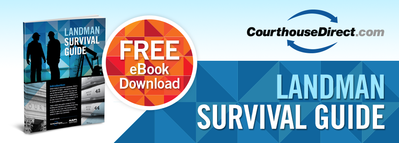 The AAPL Form 610-2015 Model Form Joint Operating Agreement was released in response to technological and legal changes that have occurred since the form’s last update in 1989. It could take until 2020 for full adoption of the 2015 version if it followed the pattern of the 1989 update.
The AAPL Form 610-2015 Model Form Joint Operating Agreement was released in response to technological and legal changes that have occurred since the form’s last update in 1989. It could take until 2020 for full adoption of the 2015 version if it followed the pattern of the 1989 update.
Still, many landmen have probably come across the use of the new form by now. The differences have been noted and debated in professional circles, so there is more information about how the new form addresses various issues that were not seen before horizontal drilling and fracking came on the scene.
Let’s take a look at the updated form so you can gain a better understanding of the changes.
History of AAPL Form 610 Joint Operating Agreement
In 1956, the American Association of Landmen released the first iteration of Form 610 to provide a standardized framework among operators. The previous years had been marked by reduced efficiency and profits due to a wide range of conflicting frameworks then in use.
The AAPL Form 610 has undergone four significant modifications since the first implementation. For vertical wells, Form 610-1989 is still sufficient, but if you are negotiating a lease for a horizontal well or wish to remain abreast of legal developments, you may want to use the 2015 form.
Technological and Legal Changes
A new joint operating agreement was formed for two main reasons - changes in industry practice and recent court decisions, particularly in Texas. A change in the notification process was introduced to recognize the use of email in business dealings.
The most significant change in the oil and gas industry has been the introduction of inexpensive, sustainable horizontal drilling. Also, hydraulic fracturing (fracking) has become ubiquitous in the shale plays across the U.S.
The 1989 version of AAPL Form 610 could not foresee these changes, nor could it account in advance for some of the legal challenges that have come about as the industry continues to mature. Without an updated joint operating agreement that provided definitions and clarifications, landowners, operators, and landmen may be creating an uneven playing field that doesn’t take today’s practices into account.
Over the years, U.S. courts have begun to apply stricter liability standards on some parts of the industry, including problems resulting from oil spills, surface damage, and water contamination.
Changes in Terminology
Several words and terms have new or expanded definitions and clarifications in the 2015 form. Most of the changes and new definitions were prompted by the introduction of horizontal drilling since the previous version of the form was developed with vertical drilling as its sole basis.
The following is not an all-inclusive list.
- Deepen - redefined to include the extension of horizontal wells.
- Well surface - clarified to include the entry point of the well shaft and the bottom of the lateral bore.
- Displacement - the term has the same meaning as defined by state regulations governing the contract area. However, if the regulations provide no definition, displacement shall mean the length of a lateral.
- Drillsite - when used in connection with a horizontal well the term means both the surface hold location and the oil and gas leases or interests within the drilling unit on or under which the wellbore, including the lateral, is located.
- Extension operations - the definition has been changed to include language constricting the term. It now means an operation related to a horizontal well where a lateral is drilled in the same zone to a displacement greater than that contained in the proposal approved by consenting parties or to a displacement where the lateral was drilled according to a previous proposal. The extension agreement is considered binding on all consenting parties even if one or more of the parties object.
- Spudder Rig - the definition has been restricted to a drilling rig only used for drilling all or part of the vertical portion of a horizontal well. If the rig is used just for setting conductor pipe, it is not considered a Spudder Rig.
- Horizontal well - first-time definition in which the term is considered to have the same meaning as that defined by state regulations governing the contract area. However, if such provisions are absent, the term will mean a well containing one or more laterals which are drilled, completed, or recompleted such that the horizontal component interval extends at least 100 feet in the objective formation(s) and exceeds the vertical component of the interval.
- Lateral - defined as the portion of a wellbore in a horizontal well between the initial penetration of the objective zone and the terminus.
- Total measured depth - when used in connection to a horizontal well, it means the distance from the surface to the terminus as measured along and including the vertical component of the well and the lateral(s). Also, when considering horizontal wells, the terms depth and total depth are read to be total measured depth.
For more information on these and other terminology changes and additions, consult an experienced attorney in the mineral rights field.
Changes Due to Legal Issues
Several revisions were made to AAPL Form 610-2015 in response to legal challenges brought previously that were inadequately addressed by Form 610-1989. Here are a few examples.
- Operator’s Standard of Conduct - the new form clarifies when an operator may not be held liable. Specifically, the Operator has no liability to other parties for sustained losses or incurred in connection with authorized or approved operations under this agreement except such as may result from gross negligence or willful misconduct. The clarification is in italics, limiting it to authorized or approved operations under the agreement except for gross negligence and misconduct. Anything outside the agreement is still fair game.
- Access to Records - the new form states that a non-consenting party is not entitled to access the well itself nor the information and reports relating to non-consented operation until a specific condition is met. For a non-consenting party to receive access, the consenting parties must have reached full recoupment or after two years following the date the non-consented operation was commenced, whichever comes first.
- Removal of Operator - a crucial addition was made to the clause governing the removal of an operator. In the previous version of the form, the operator could be removed for good cause, which meant not only gross negligence or willful misconduct but also the material breach of inability to meet the standards of operations…etc. The new form adds that good cause shall include, but not be limited to gross negligence or willful misconduct, material breach…etc., thus broadening the allowed reasons for removing an operator.
These are but three changes made in response to legal challenges such as Reeder v. Wood County Energy, LLC, and Seagull Energy Inc v. Eland Energy Inc., both from the Texas Supreme Court.
Final Note
This post highlights just a few of the changes made to AAPL Form 610 since the last update over 30 years ago. Since this form is in broad use with full acceptance and the fact that horizontal drilling has entered the scene, landmen, mineral rights owners, drilling operators, and attorneys should become familiar with the nuances of the newly revised form.























